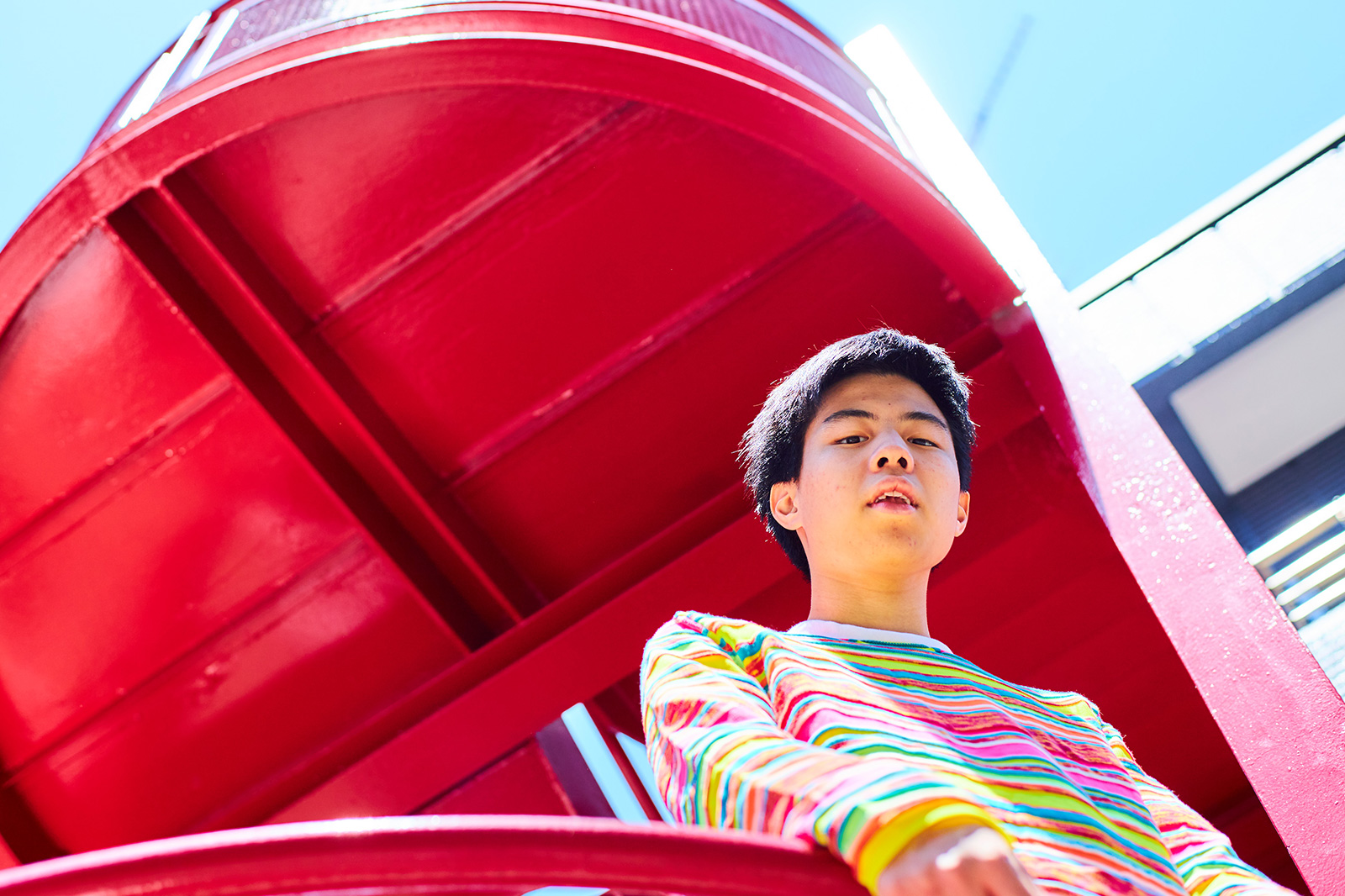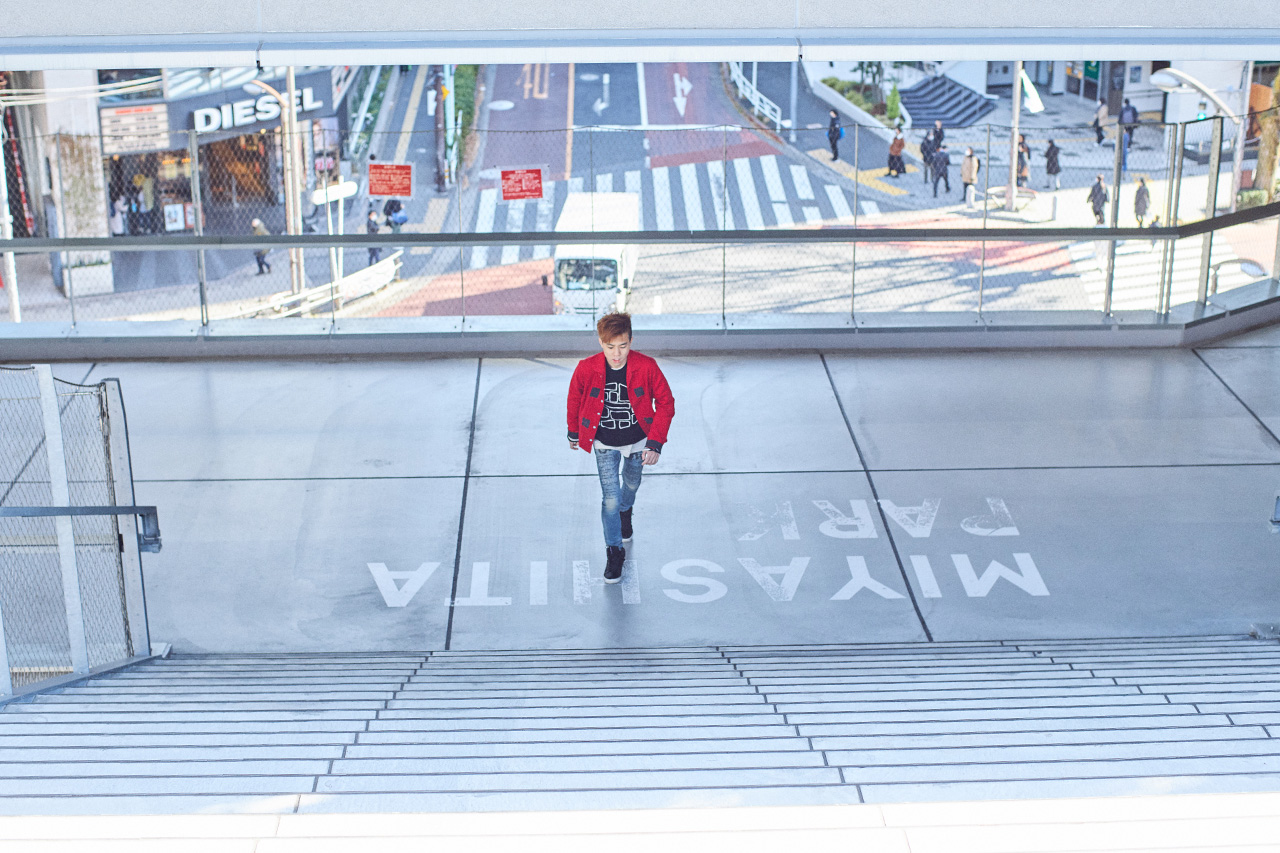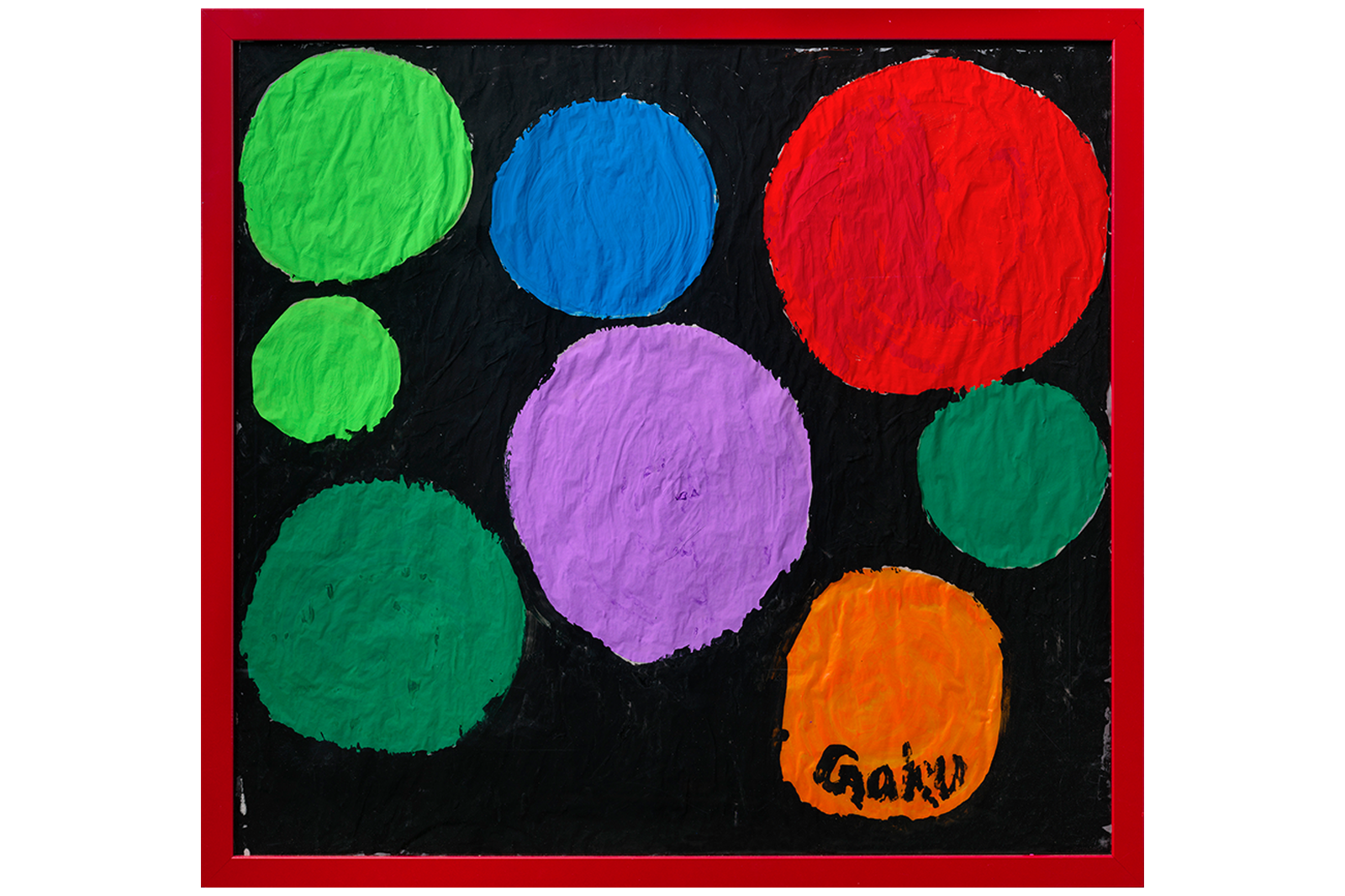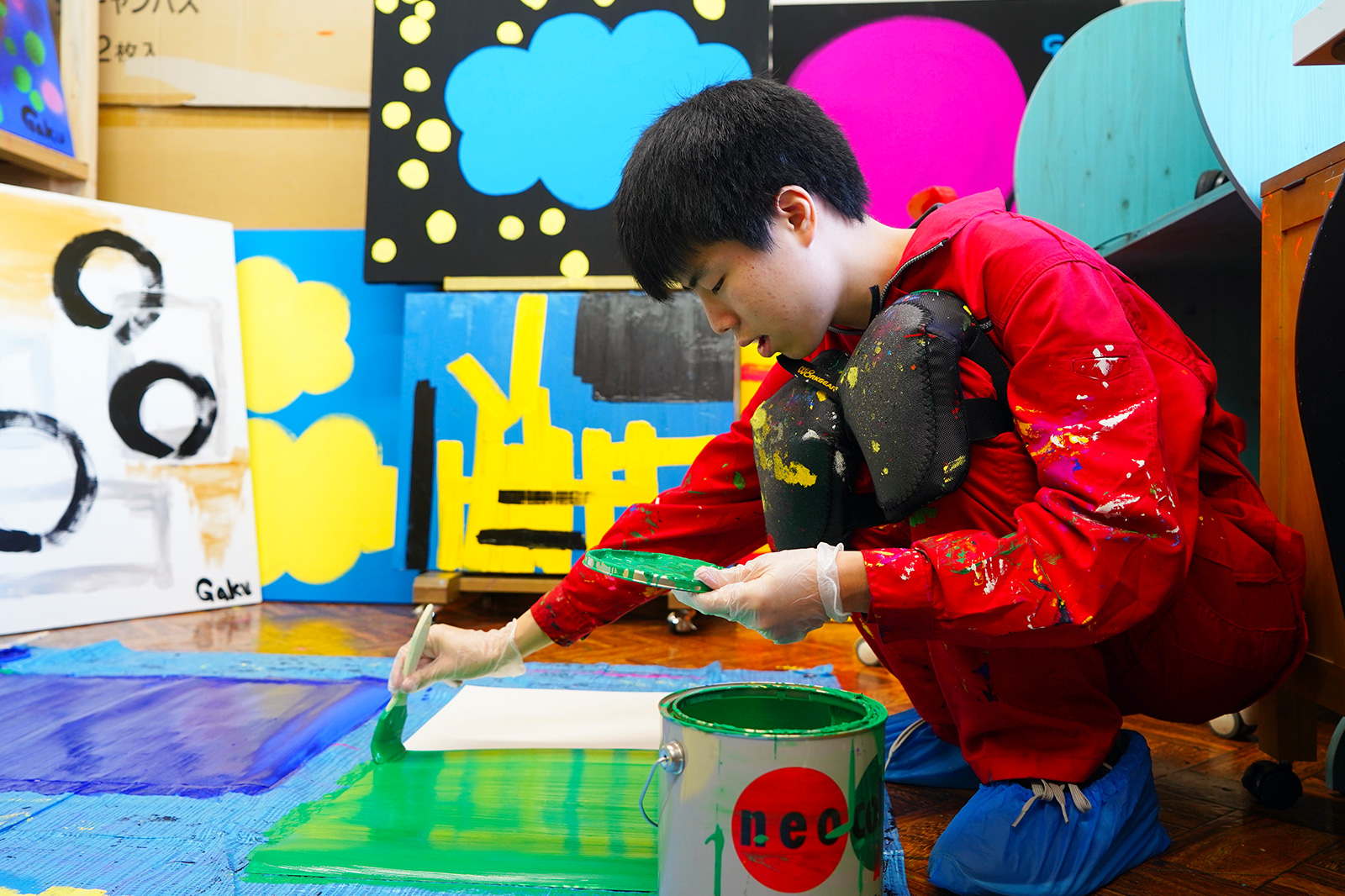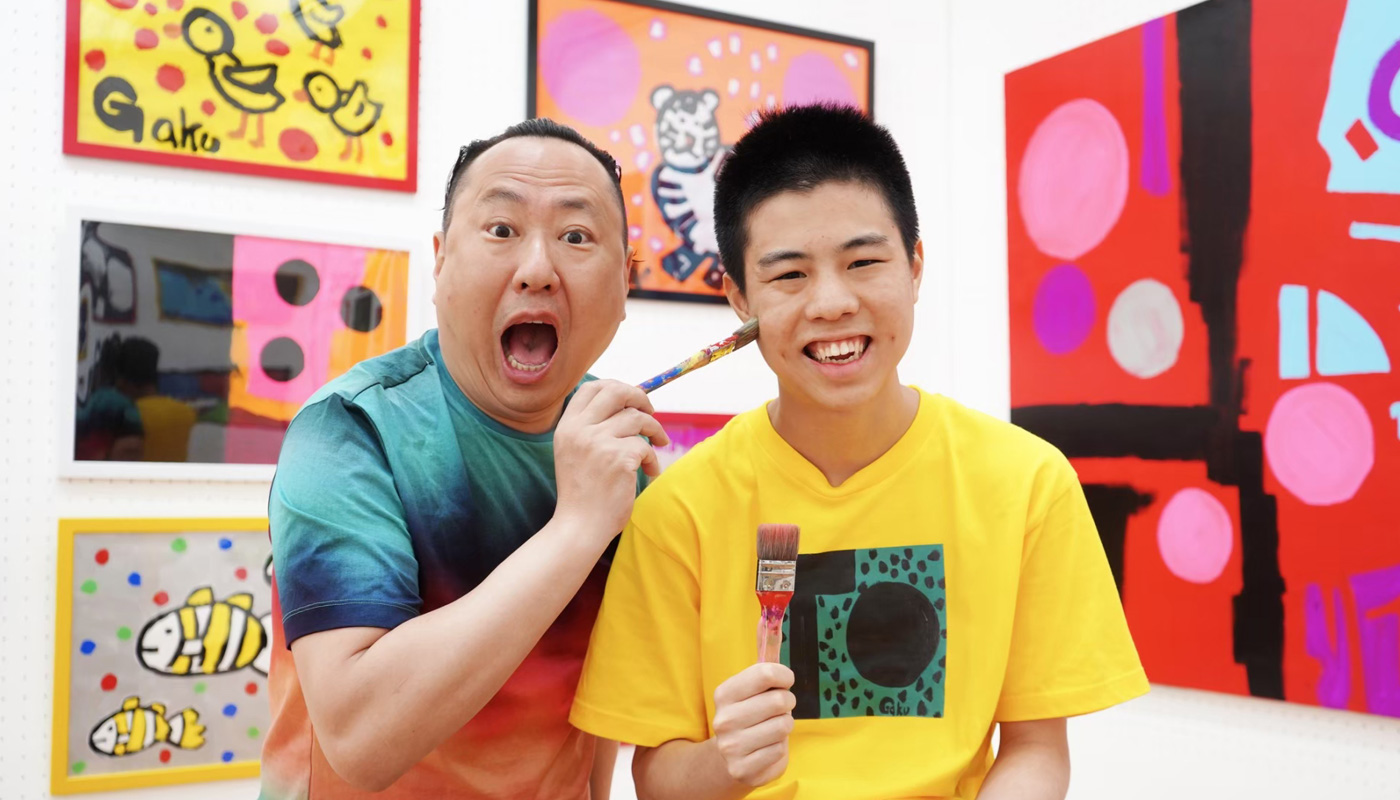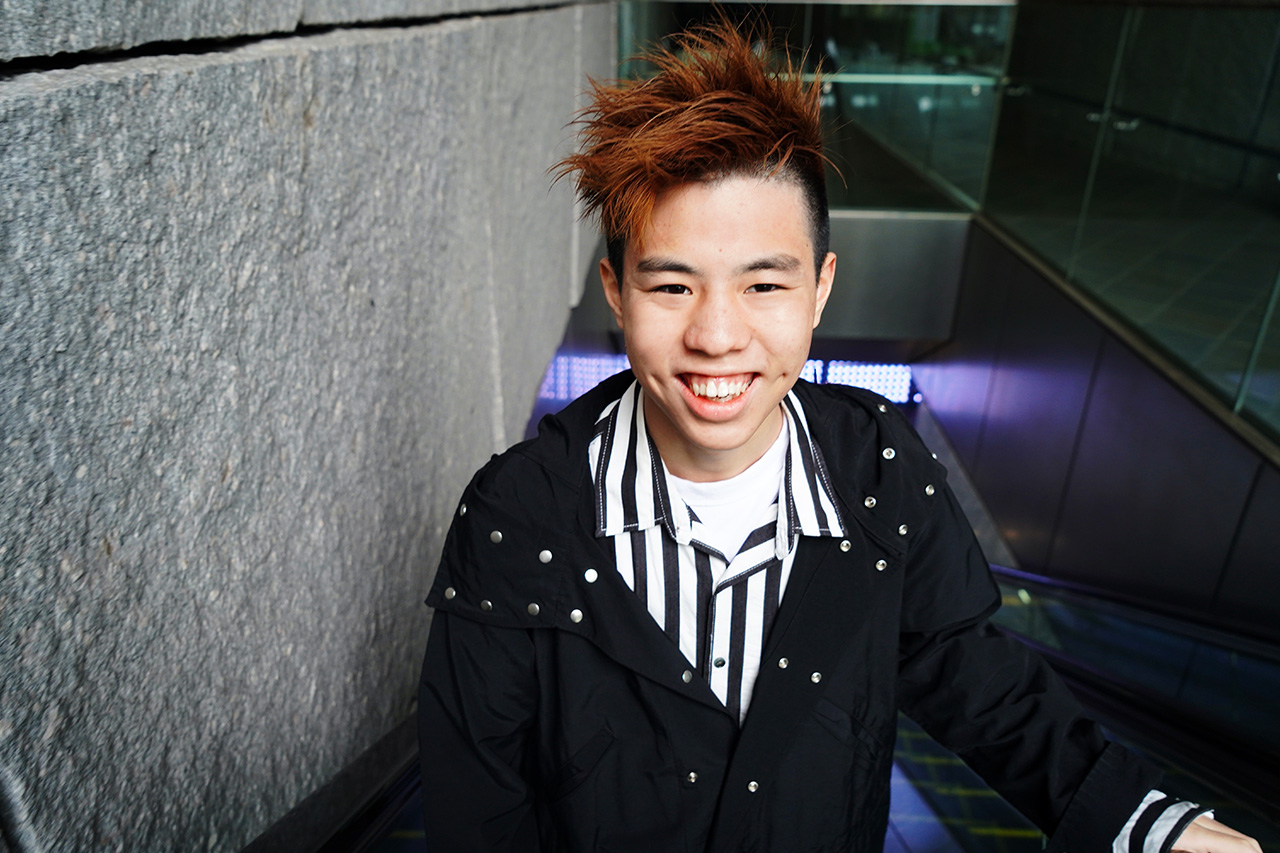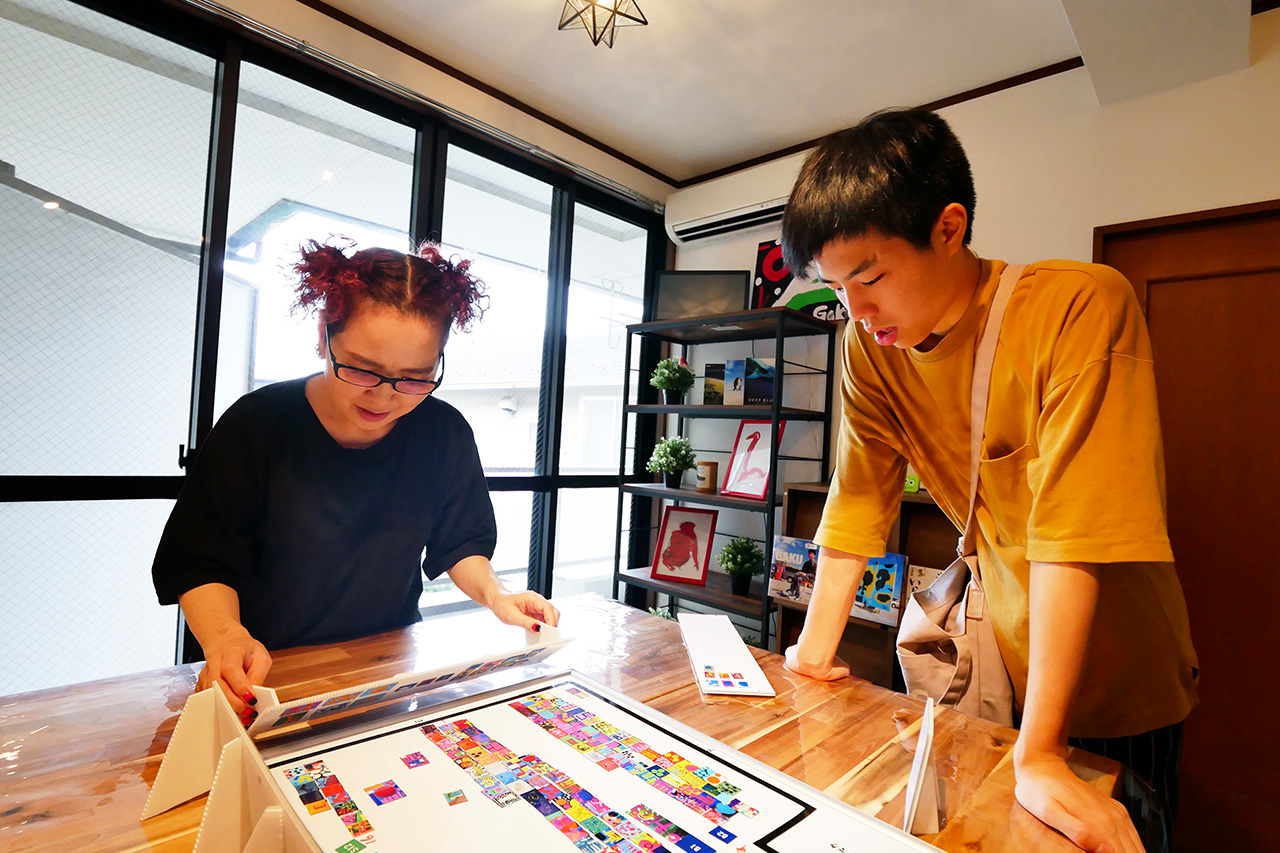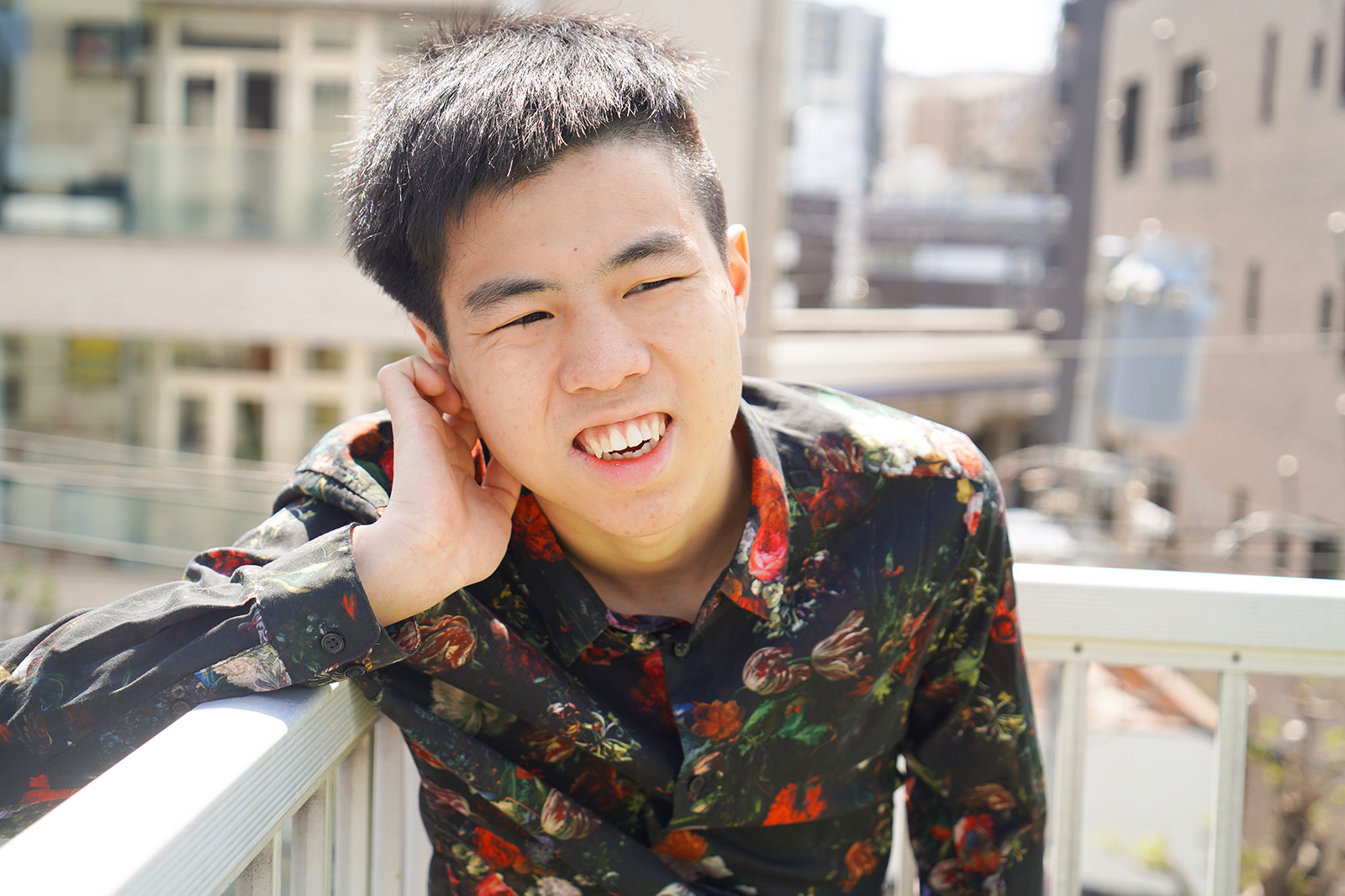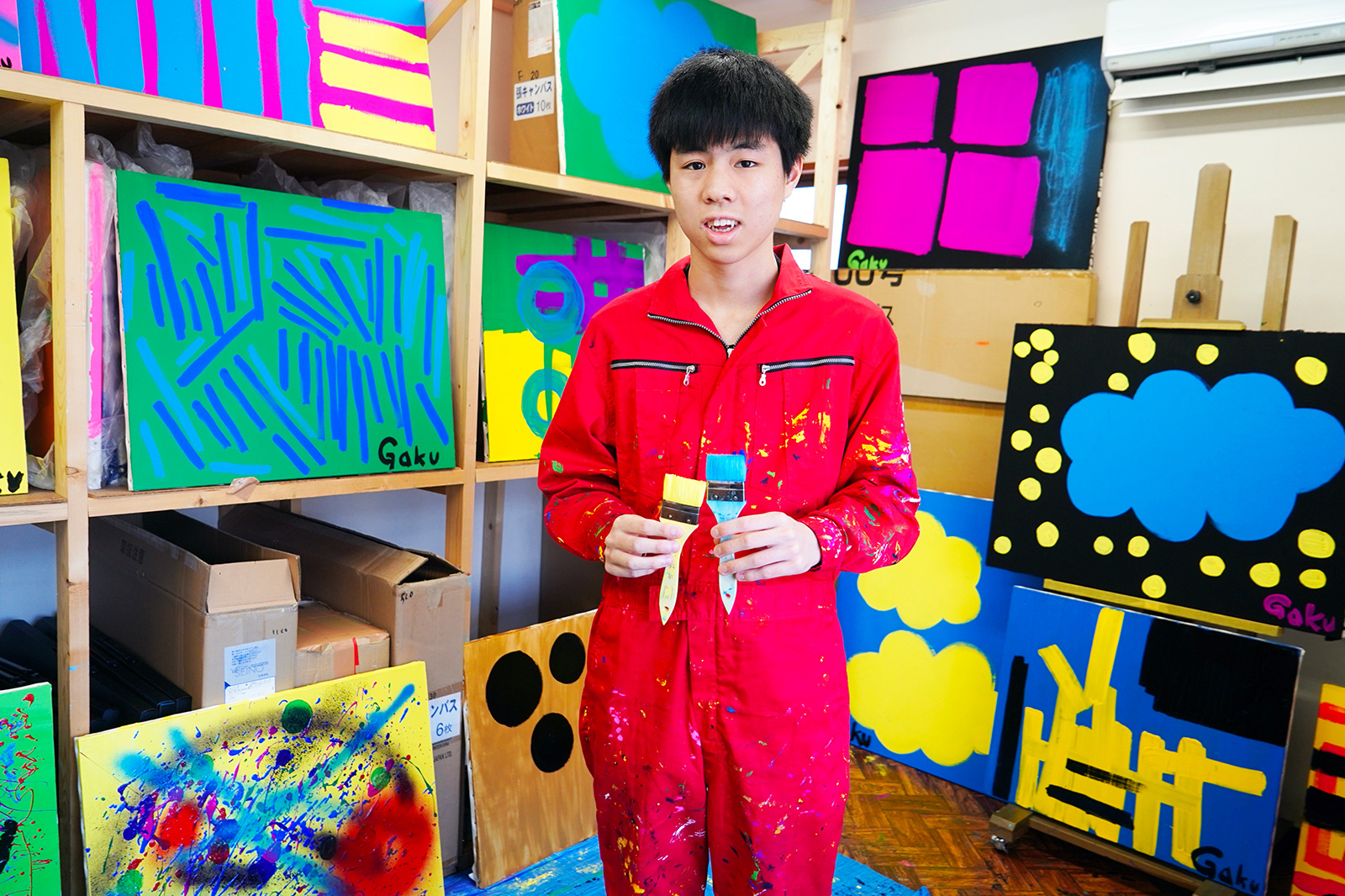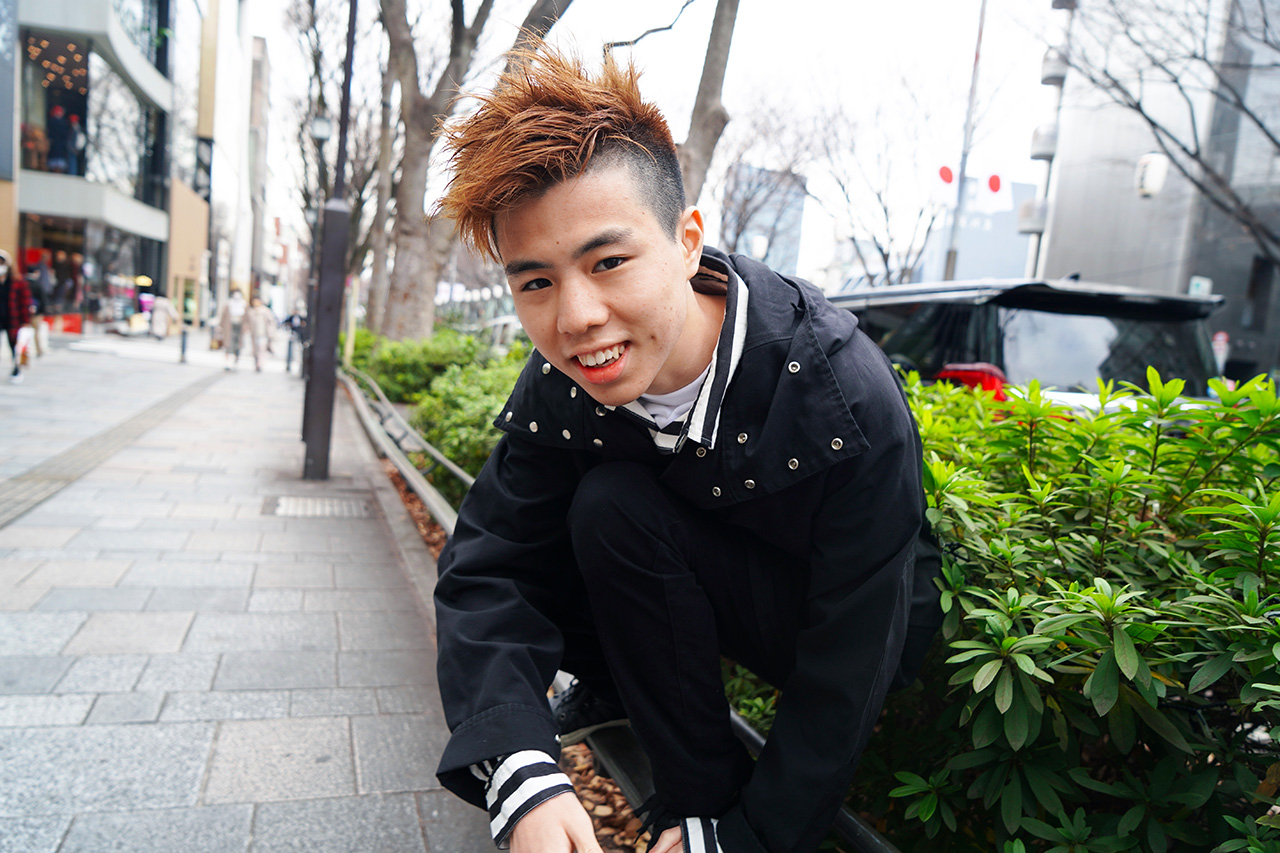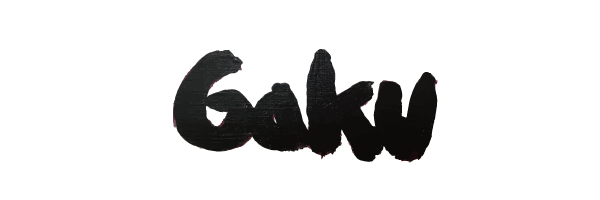日本語のストーリー 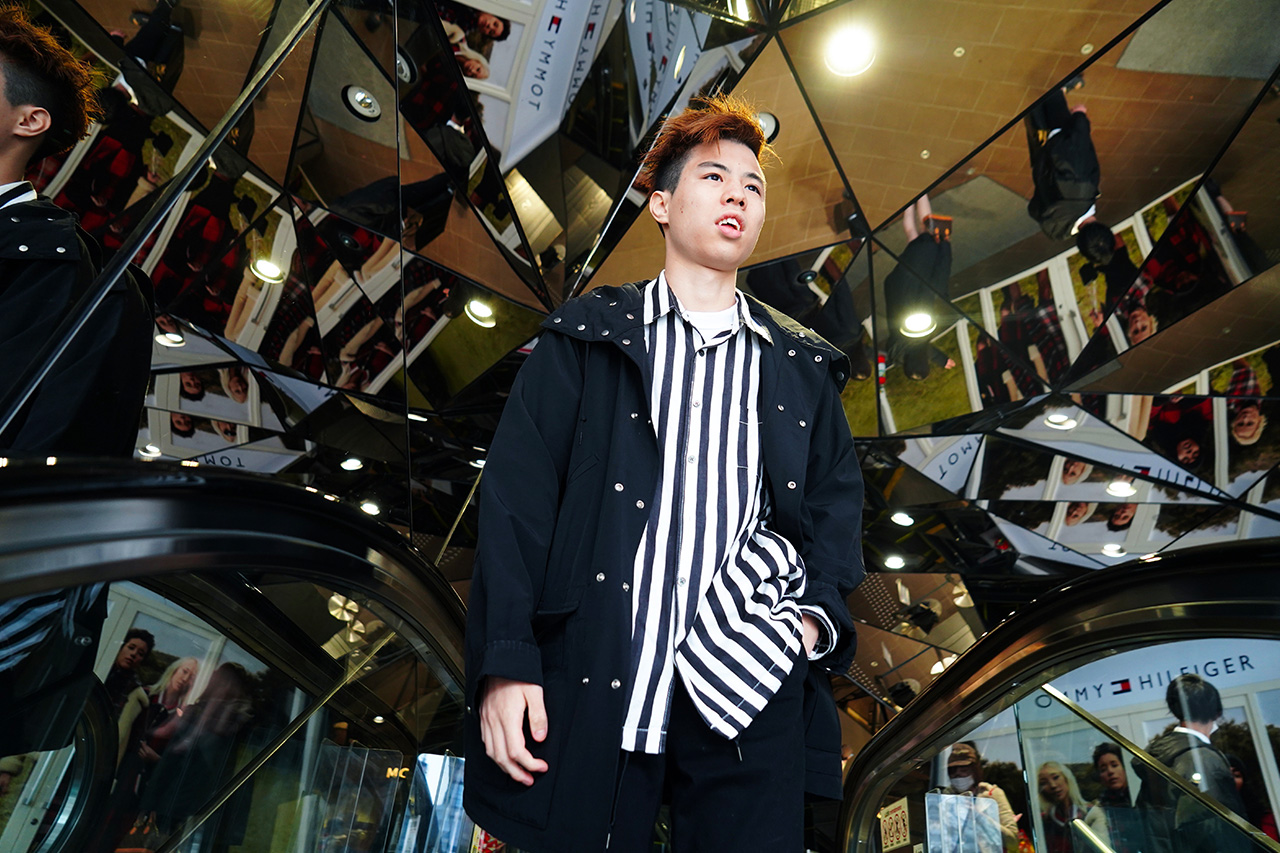
GAKU BIO
Gaku, an artist with severe autism. His miracle began when he was 16 years old. Now he creates 200 paintings a year. Resides in Kawasaki. Diagnosed with autism at age 3. Hoping for quality therapy for Gaku, his family moved to Los Angeles when he was 4, where he lived for 9 years.
Upon returning to Japan at 14, his father founded I’m Inc. to pursue a more secure and reliable welfare program for his son. Attended Nobel High School, where he met Coco and found his passion for painting.
Currently resides at the care facility Picasso, also run by his father. As a professional artist, Gaku actively draws every day, finishing an astonishing 200 pieces a year.
Characteristics of Autism
GAKU is diagnosed with severe autism with an IQ of 25. He has difficulty communicating verbally, with his vocabulary being that of a five year old. However, while his verbal skills may be limited, he was always good at getting his way and making people do things for him, even as a young boy, and his family suspected that he may be smarter than he seemed.
Just recently, GAKU suddenly showed amazing observation and memory, by recalling the details of the classroom he spent in his childhood, as well as the names of his classmates and what they did. “People with autism perceive things differently than we do, so general intelligence tests can’t measure their abilities. When somebody communicates differently or when we can’t get the expected output from them, we tend to assume that that person doesn’t understand, but that’s wrong. ” (comment by Sato – GAKU’s father and I’m Inc. CEO)
Sato has been convinced of something since GAKU started painting. That is, people with autism are so much more interested in people than we think. “People with autism are said to be uninterested in others or incapable of empathy, but that couldn’t be further from the truth. They just use a different method of communication. Looking at GAKU, I can see how much he wants to communicate with people. And GAKU himself was able to realize that he could communicate with people through his paintings. GAKU’s art is his way of communicating to the world. ” (Sato)
Sato thinks that GAKU’s driving force for painting is his desire for communication, but at the same time, the characteristics of autism are reflected greatly in his art. For example, his paintings are strongly influenced by his need to squeeze out all the paint tubes or empty out all the paint cans once he opens them. Also, the way he does the base coat so evenly, is another reflection of his fixation for perfection. Furthermore, the unusually fast drawing speed is largely due to his heightened concentration, another characteristic of his disorder. Perhaps because of this, people who bought GAKU’s paintings often say, “I felt a tremendous amount of energy from the painting.”
Sato thinks that “the characteristics of autism are directly reflected in his paintings. The GAKU who has autism and GAKU the artist are the same.” Instead of trying to change or suppress the characteristics of GAKU’s autism, he adjusted the surrounding environment so that his son could easily express himself and communicate. GAKU’s artistic activities are one case where this worked extremely well.
However, while GAKU is active as a professional artist, his daily life is filled with struggles particular to autism, such as his strong impulsivity and extreme obsessions, which definitely takes a toll on family members and support staff. However, Sato laughs, and says without a hint of despair, “Other than when he’s painting, GAKU is like a constant nuclear fusion. This hasn’t changed since he was born.” The cheerfulness and humor that we see in GAKU’s art definitely runs in the family.
Meeting Coco Furuta
GAKU is diagnosed with severe autism with an IQ of 25. He has difficulty communicating verbally, with his vocabulary being that of a five year old. However, while his verbal skills may be limited, he was always good at getting his way and making people do things for him, even as a young boy, and his family suspected that he may be smarter than he seemed.
GAKU first met Coco Furuta when she joined the staff at Nobel High School. He was 16 years old. Coco, whose own brother had Prader-Willi syndrome, a rare genetic disorder, had always wanted to work in supporting people with disabilities. And it was Coco, who helped GAKU find his passion for painting.
At that time, GAKU was said to be the most rambunctious among the children who attended the after-school program run by his father, but Coco took an interest in him. She offered to look after GAKU at Nobel High School. Coco laughs and recalls, “I think it was love at first sight.”
“When I first met GAKU at the after-school class excursion, I understood the difficulties of looking after him, but at the same time, I was fascinated by how engaging and lovable he was. He has such a great smile, and he would play pranks on people which was so funny. I was instantly captivated. Afterwards when we met again in the classroom, GAKU, who remembered me, looked me straight in the eye and said ‘Coco-san’. That really made an impression. ” (Coco)
Initially, while GAKU attended Nobel High School, he barely did any school work. He couldn’t sit still for 5 minutes, and would suddenly jump out of the classroom, run around the block, and come back. He basically spent his day doing what he pleased. However, watching GAKU’s behavior, Coco intuitively felt that he was much more intelligent than he let on. In order to figure out the direction on how to instruct GAKU, Coco wanted to know how much learning ability GAKU actually had.
GAKU was given an elementary school entrance exam workbook, and it turned out that he was able to solve a lot of the questions. He liked being praised for answering correctly, and he actively tackled the problems. However, the goal for GAKU was not to show results academically. Coco strongly felt that she needed to find a communication tool for GAKU that could replace language and speech.
GAKU is Introduced to Art
Before joining I’m Inc., Coco had had a successful 30 year career in fashion, working as a designer for several brands showing in Paris. Additionally, her father owned an art gallery and she grew up surrounded by art. “The only things I can teach GAKU are about fashion and art. Fashion requires communicating with others, so it’s not for GAKU. But paintings are self contained, so maybe that can be a tool for him,” Coco thought.
Coco showed GAKU painting materials and paintings, but initially, he was not interested . He didn’t want his hands to get dirty with paint. So Coco changed the material to crayons. Then, for the first time, GAKU drew a picture of his favorite “Baby Einstein” character. Coco saw the potential in GAKU’s drawing, which firmly captured the shape of the character.
At one point, Coco took GAKU to Tokyu Hands in Shibuya. The store’s art supplies department, with its neatly lined with paints, was Coco’s favorite place, and she was curious as to how GAKU would react. GAKU sat in front of the paint shelves, gazing and gently stroking the paint tubes with his finger. In the beautiful gradation of colors, GAKU learned that there were many different shades of red, and many different shades of blue.
Afterwards, GAKU enjoyed arranging and touching the paints that he bought for a while, but when Coco taught them that he could draw with them, GAKU started drawing little by little. Seeing this, Coco began to be convinced that GAKU had a talent for painting. It was around this time that GAKU would come across the fateful painting that would change his life.
GAKU’s Fateful Encounter with Taro Okamoto’s ‘Sun’
Coco had taken the students at Nobel High School on a trip to the Taro Okamoto Museum. GAKU, who is extremely hyperactive and cannot sit still for more than 5 minutes, took one look at Okamoto’s painting, and stood still for the longest time, staring at the painting.
Then, all of a sudden, the next day GAKU said, “GAKU paint!” and began painting. Coco was in utter disbelief. GAKU had drawn a ‘sun’, a symbolic motif of Okamoto’s work. Coco had never explained much about Taro Okamoto to GAKU. However, GAKU had the ability to feel Okamoto’s energy through his art, understand, interpret, and express it in his own way.
The first ‘sun’ that GAKU drew is full of color; red, blue, green, purple, and orange. “To GAKU, the sun takes many forms. He sees the world in his own unique way, and expresses that brilliantly,” Coco says of his work.
With this painting, GAKU embarked on his journey as an artist.
GAKU’s Painting Style
GAKU’s early paintings began by dividing the canvas and painting the areas separately. Then, when Coco showed him that he could paint a base color and then layer different colors on top, he started drawing circles. Coco thinks the reason why the initial shape was a circle, was that “the circle is the most comfortable shape for humans. Just as a baby likes round things, It was a shape suitable for his first step.”
Then, deriving from circles, he moved on to combining simple shapes such as ellipses, squares, rectangles, stripes, lines, dots … (interestingly, whether it’s because the balance is difficult, or the shape is somehow uncomfortable for him, he doesn’t draw triangles). “Different sizes, colors, order, blurring of the brush… The combination of these shapes were endless and each painting was different. I was surprised to see such a wide range of expression with such limited elements.” (Coco)
When GAKU starts on a painting, he first paints the base color very neatly. He has his favorite base colors (green, blue, orange), but which color he chooses depends on his mood of the day. He continues painting the same base color for a certain period of time, and when he’s done about 10 of them, he lines up 3 or 4 canvases and starts to work on them simultaneously. Coco doesn’t quite understand how he does this, but he paints them at the same time and completes them at the same time.
After going to zoos and aquariums, GAKU often draws animals and fish. When he doesn’t know the details, he asks Coco to search the image on the Internet and checks the detailed forms. The first animal GAKU drew was a chick. He had seen a chick when he went to Orbi Yokohama, an experience oriented zoo in Yokohama. “GAKU had such a strong desire to draw a chick, he painted the entire canvas in “chic color (yellow)”, and after that didn’t know what to do. He was struggling because he didn’t know how to draw it, but when I said, ‘Maybe if you draw an outline on the yellow, it would look like a chick …”, he drew a picture of a chick with only a black outline.
He completed an adorable piece that featured three chicks outlined in black on yellow paper and some red circles to balance out the composition. From this experience, in the early days, he often drew animals with black outlines, but gradually began drawing animals in a variety of ways, such as those without outlines, animals layered onto other motifs, animals where the head and torso were separated, etc.” (Coco)
In this way, GAKU decides what and how he draws, everything from the motifs, composition, colors, and brushstroke. What Coco teaches GAKU is not artistic technique, but the joy of painting, freedom of expression, and the possibility of communicating through art. “Painting is like a daily conversation for him. Instead of talking, he just expresses what he wants to convey on the canvas using the technique of painting. The range of his work represents the depth of his mind and soul.” (Coco)
Coco’s Thoughts; “GAKU’s Greatest Talent is to be Loved by Everyone”
Whenever Coco is asked about GAKU, she almost always talks about his charming personality. “GAKU is such a lovable human being. He’s extremely good at reading people, and plays great pranks on people (laughs). He captures people’s hearts in an instant. I think GAKU’s greatest talent is to be loved by everyone.
GAKU happened to be born with autism and just happened to have limited language skills. I happened to not have autism, nor did I happen to have poor language skills. I don’t think there is any superiority or inferiority in our relationship, nor is it a teacher-apprentice relationship. We are equal, and my role is to help him expand his means of expression.
What kind of painting materials can GAKU use to express the feelings that he has accumulated inside of him? How can I create a more comfortable environment for him? To find out what he wants, I talk to him, give him new materials regularly, and just try to broaden his perspective physically and emotionally. From there, GAKU can choose what he wants to do himself. ” (Coco)
It’s been three years since Coco first met GAKU. During this time, GAKU has shown remarkable growth.
“When I first met GAKU, it was difficult to simply walk together, I would always have to hold his hand so that he wouldn’t run off. He would just say what he wanted to say, and it wasn’t an actual conversation, but he was always a cheerful boy who loved to talk, and he still is. Now that he knows that he can communicate through his art, GAKU feels comfortable in expressing his inner feelings, he understands the joy of communicating with others, and connecting with others.
Along with that, he began to enjoy talking with people even more, and his vocabulary improved exponentially. Of course, there are many routine conversations, but we are always laughing. He has shown tremendous emotional growth, and he’s become very stable. I feel that painting is definitely accelerating GAKU’s natural growth. ” (Coco)
He’s over 20, and he is experiencing the complex emotions that any adolescent goes through. Coco wants GAKU to be an artist who can express such conflicts and negative feelings.
“As GAKU’s emotions develop, his art is changing with it. Recently, when GAKU becomes overwhelmed when he’s painting, he often says to me, “Tell me what to do!” I think he says this, not because he really wants me to tell him what to do, but by drawing out an opinion that differs from his, he wants to reconfirm what he’s already made his mind up on. He’s become more aware as a professional artist, and his desire to draw better and to be acknowledged and accepted has become stronger.
Creative input is the most important thing for GAKU to continue to grow. Being exposed to sophisticated culture and art, experiencing different things… From there, GAKU can see and feel as he pleases. I can’t predict how GAKU will process and arrange this information, and ultimately translate that onto the canvas. He always goes far beyond my imagination.” (Coco).
Sato’s Thoughts; “GAKU’s Paintings are a Plea to Society”
What can you say about GAKU’s artistic venture? Sato answers the question as follows.
“The important thing isn’t that GAKU began to paint, but that he was able to realize and understand the characteristics of autism and convert that into painting. The other crucial factor is that the people around him understood and accepted his autistic tendencies, which is often considered a difficulty or obstacle, and created an environment where he could apply his unique sensibilities. And finally, there is the issue of how we need to be more aware of accepting minorities.” (Sato)
The discussion on diversity is front and center in our world today, and we are called on to recognize and accept all minorities. Sato calls this “creative diversity.”
“Minority people have a different sensibility from the majority, which could be difficult to understand. For example, non-LGBT people may not be able to have a true insight on LGBT people. But the fact is that there are such people in the world. So how do you understand and accept them? What’s needed is a creative mind on the part of the majority. When we are presented with a fact or situation that lies beyond our preconceived notions, we must use our imagination and think, “Maybe this is the case?” We must adjust and adapt and be able to say, “Oh, so that’s why.” In other words, the issue of diversity cannot be solved unless the recipient is creative. “(Sato).
With that in mind, this becomes the theme for society as a whole.
“GAKU’s work is there as a catalyst to think about this issue. GAKU’s painting is not just something he wanted to draw, but it’s a challenge to the world from GAKU who has no words. He can’t plead in words, but he can plead through his paintings. He is telling us (non-disabled people) how he wants us to accept his autism and how to recognize his emotions. It is up to our (non-disabled people) creativity to decide how we interpret and accept his art.” (Sato)
GAKUプロフィール
GAKUは知的障害を伴う重度の自閉症と多動症ゆえに、言葉を介したコミュニケーションには困難が伴う。そんな彼が16歳の時に突然絵を描き始めた。現在では年間200枚以上のペースで絵を描き続けている。
本名:佐藤楽音(がくと)。2001年5月1日生まれの自閉症アーティスト。川崎市在住。3歳の時に自閉症と診断され、4歳の時に、当時最新の療育を提供していたといわれるアメリカ・ロスアンジェルスへ家族で渡る。以後、9年間ロスで療育を受けながら過ごす。14歳の時、日本に帰国。
中学卒業後は、父親が彼のために設立した福祉施設『アイム』が運営するフリースクール『ノーベル高等学院』へ入学。そこでCocoと出会い、絵を描くことに目覚める。現在は、生活介護『ピカソ』に在籍し、日々精力的にアート活動を続けている。
自閉症の特性
GAKUは知的障害を伴う、重度自閉症と診断されている。言語能力は現在でも4~5歳程度でしかなく、言葉を介したコミュニケーションには困難が伴う。ただ、言語能力は低いものの、GAKUは幼い頃から自分の主張を遂行する計画性や人を動かす能力に長けていたため、「実はもっと賢いのでは?」というふうに周囲には思われていたという。 そして、最近になって、それを裏付けるようなことが起こる。高校生になった頃、GAKUは突然、幼少期に過ごした教室の細部の様子やクラスメイトの名前、その生徒が何をしたかを正確に言い出すなど、驚きの観察力と記憶力を見せたのだ。
「自閉症の人たちは私たちとは違う方法で物事を認識しているため、一般の知能検査では能力が測りきれない。私たちは、自分たちとコミュニケーションの取り方が異なったり、期待したアウトプットが出てこないと、「この子は理解していない」と決めつけがちだが、それは間違っている」(佐藤:父親であり『アイム』の代表でもある)。
GAKUが絵を描き始めてから、佐藤は確信したことがある。それは、自閉症の人は人一倍人に興味がある、ということだ。
「もともと自閉症の人は、人に興味がないとか、共感能力がないなどと言われるが、そんなことはまったくない。そう見えるのは、私たちがとるコミュニケーション方法を彼らがとらないから。GAKUを見ていると、いかに彼が人に対してコミュニケーションをとりたがっているかがよくわかる。そしてある時、GAKUは自分の特性を絵に転用すれば人とコミュニケーションがとれることに気づいた。GAKUの絵は、世間に対しての彼のコミュニケーションそのものだ」(佐藤)。
GAKUが絵を描く原動力には、彼のコミュニケーション欲求もあるが、同時に、自閉症としての特性も大きく影響している、と佐藤は考えている。例えば、絵具のチューブを一本開けたら全部絞り出したいとか、缶を一度空けたら全部カラにしたいなどという強いこだわりあっての絵である、と。また、下地塗りをきれいに均一に仕上げるのも、ムラを残したくないというこだわりが影響している。さらに、描くスピードが異常に速いのも、特性である集中力の高さによるものが大きい。そのせいか、GAKUの絵を買ってくれた人からは、よく「絵からものすごいエネルギーを感じた」と言われることが多いという。
「彼の描く絵には、自閉症の特性がそのまま転用されている。自閉症のGAKUも絵を描くGAKUも、同じGAKUだ」と考える佐藤は、自閉症の特性を変えようとするのではなく、周囲の環境をGAKUに合わせて整え、彼がアウトプットを出しやすい環境を作った。GAKUのアート活動は、それがうまくいった一つのケースだ。
ただし、GAKUはプロのアーティストとして活躍する一方で、日々の生活は自閉症の特性である強い衝動性や極度なこだわりとの闘いという面も持っており、家族や周囲の支援者の大変さは計り知れない。だが、「絵を描いている時間以外のGAKUは、まるで核融合が起きているかのよう(笑)。それは、彼が生まれた時から今まで一貫して変わらない」と言って笑い飛ばす佐藤から悲壮感は微塵も感じられない。そこには、GAKUの絵の根底にある明るさとユーモアがあった。
古田ココ(通称:Coco)との出会い
GAKUの絵画の才能を開花させたのは、古田ココ(通称:Coco)だ。Cocoは、GAKUが16歳の秋、『ノーベル高等学院』にスタッフとしてやってきた。自身の弟がプラダー・ウィリー症候群という知的障害を伴う先天性の障害者であったCocoは、セカンドキャリアとして障害に関わる仕事を望んでいた。
その頃のGAKUは、父親が経営する放課後デイサービスに通う子たちの中でも、一番の暴れん坊と言われるほどだったが、逆にCocoはそんなGAKUに興味を持った。そして、自分から『ノーベル高等学院』でGAKUを担当することを申し出た。その理由を「多分、私の一目惚れ」とCocoは笑って振り返る。
「放課後デイの遠足で初めてGAKUに出会った時、確かに大変そうではあったが、同時に、とても魅力的な子だなと心惹かれた。GAKUは笑顔が何より魅力的で、クスっと笑えるイタズラの仕掛けがうまく、一瞬にして心を掴まれてしまった。その後、教室で再度会った時、私のことを覚えていてくれたGAKUが、「ココさん」と言って目を合わせてくれたことはとても印象的だった」(Coco)。
当初、『ノーベル高等学院』でのGAKUは、学生らしい生活は送ってはいなかった。5分と座っていられない性分なので、突然外に飛び出して一周走って帰ってくるなど、自由に1日を過ごしていた。しかし、Cocoは、GAKUの行動を見ていて、彼には検査で測り得ない知的センスがあると直感的に見抜いた。まずは今後の指針を立てるためにも、GAKUにどれくらいの学習能力があるのか知りたいと思った。
そこで、試しに小学校受験用の問題集をやらせてみたところ、予想以上にGAKUは問題を解くことができた。正解して褒められたことがうれしかったようで、積極的に問題に取り組んでくれた。とはいえ、勉強で結果を出すことはGAKUの目標ではない。Cocoは、GAKUの内なる世界を外に伝えるための、言葉にかわる新たなコミュニケーションツールを探し出したいと強く思うようになった。
GAKU、絵の世界に足を踏み入れる
ところで、『アイム』に入社する以前のCocoは、いくつかのパリコレ参加メゾンのデザイナーとして、30年以上活躍してきたというキャリアを持つ。そして、父が画廊を経営し、幼い頃から絵画に慣れ親しんだ環境で育った。「私がGAKUに伝えられることは、ファッションと絵画しかない。ファッションは他者とのコミュニケーションをとりながら作っていく仕事なので、GAKUには向かない。でも、自己完結型の絵画なら、彼のコミュニケーションツールになれるかもしれない」とCocoは考えた。
そこで、CocoはことあるごとにGAKUに画材や絵画に触れさせる機会を与えた。だが、当初のGAKUは絵を描くことに興味を示さなかった。絵具で手が汚れることを嫌がったからだ。そこで、Cocoは画材をクレヨンに変えた。そうして、はじめてGAKUが描いたのは、大好きな『ベイビー・アインシュタイン』の絵。Cocoは、キャラクターの形をしっかりと捉えたGAKUの絵に可能性を感じた。
ある時、CocoはGAKUを渋谷東急ハンズへ連れて行った。絵具が整然と並んだ、この店の画材売り場はCocoのお気に入りの場所で、GAKUがどんな反応を示すのか興味があったという。GAKUは絵具の棚の前に座り込んで、じっと眺めながら、絵具のチューブを指でそっと撫でたりしていた。美しい色のグラデーションに、GAKUは、赤にもいろいろな赤がある、青にもいろいろな青があるということを知った。
その後、購入した絵具を、しばらくは並べたり触ったりして楽しんでいたが、それを使って絵が描けることを教えると、GAKUは少しずつ絵を描き始めるようになった。それらを見て、CocoはGAKUには絵のセンスがあると確信を持ち始めた。そんな時、GAKUに運命の絵との出会いが訪れる。
GAKU、岡本太郎美術館で『太陽』の絵に出あう
『ノーベル高等学院』の校外授業で、GAKUがCocoと岡本太郎美術館を訪れた時のこと。それまで激しい多動で、5分としてじっとしていられなかったというGAKUだったが、岡本太郎の一枚の作品の前で立ち止まり、心を奪われたかのようにしばらくその絵に魅入ったという。
そして翌日、突然「がく、絵描く!」と精力的に絵を描き始めた。それを見たCocoは衝撃を受けた。なぜなら、GAKUが岡本太郎の象徴である『太陽』の絵を描いたからだ。それまで、CocoはGAKUに岡本太郎についての説明は一切していなかった。だが、GAKUには、岡本太郎の絵画からそのエネルギーを感じ、彼なりに理解し、自分らしく絵で表現する力があったのだ。
その時、GAKUが描いた『太陽』は、レッド、ブルー、グリーン、パープル、オレンジと実にカラフルだ。「彼にとって太陽はひとつではない。彼は世界を独自の視点でとらえており、それを見事に表現した」(Coco)。
この絵をきっかけに、GAKUはアーティストとしての道を歩むことになる。
GAKUの作風
初期のGAKUの絵は、まず画面を分割して塗り分けることからはじまった。そこで、Cocoがベースとなる色を塗ったら、その上に色を重ねて塗ってもよいことを教えると、丸を描き始めた。はじめの形が丸だった理由を、Cocoは「丸は人間にとって一番心地よい形。赤ちゃんが丸い物を好きなのと同じように、彼の最初の一歩に相応しい形だった」と考えている。
その後、丸から派生して楕円、四角、長方形、正方形、ストライプ、ライン、点…(ちなみに三角はバランスをとるのが難しいのか、彼にとって心地よくない形なのか、描かない)などの単純な形を組み合わせて絵を構成しはじめた。「大きさ、色、順番、筆のかすれ…それらの組み合わせによってまったく違う絵になる。僅かこれだけのバリエーションでこれほど幅広い表現ができることに驚いた」(Coco)。
GAKUは絵を描きはじめる時、まずはベース色をきれいに塗る。お気に入りのベース色(グリーン、ブルー、オレンジ)もあるが、何色を塗るかはその日の気分次第。必ずある一定期間は同じベース色を塗り続け、それが10枚ほどたまると、3~4枚キャンバスを並べて絵を同時に描き始める。どうやって描き分けているのかはCocoにもわからないが、それぞれ同時に描いて同時に完成させる。
動物園や水族館に行った後は、動物や魚を描くことも多い。細かい形がわからない時は、Cocoに頼んでインターネットで画像を検索してもらい詳細な形を確認する。ちなみに、最初に描いた動物はヒヨコ。横浜にある体験動物園のオービィ横浜に行った時、ヒヨコを見たことがきっかけだった。「「ヒヨコが描きたい!」という気持ちが強かったせいか、GAKUは紙一面を「ヒヨコ色(黄色)」に塗ってしまい、その後どうしたら良いかわからなくなってしまった。描き方がわからず苦しんでいたが、私が「黄色の上に線描きで描いてもヒヨコに見えるかも…」と言うと、黒のアウトラインのみでひよこの絵を描いた。黄色い紙の上に黒い線描きの三匹のヒヨコと、画面のバランスを取るようにいくつかの赤い丸の描かれた、かわいらしい作品ができあがった。この経験からか初期は黒いアウトラインを描いて動物を描くことが多かったが、次第にアウトラインなしで描いたり、モチーフの上に動物を描いたり、頭と胴体を区切ったり、いろいろな動物の描き方を取得していった」(Coco)。
このように、絵のモチーフ、構図、色、筆使い…絵に関することについては、すべてGAKUは自分で決めて描いている。CocoがGAKUに教えていることは、美術的な技法ではなく、絵を描く楽しさと表現の自由さ、絵画を通じて伝えられることの可能性だ。「絵は、彼にとって日々の会話のようなもの。伝えたいこと表現したいことを、話をするかわりに絵という手法を使ってキャンバスの上で表現しているだけ。彼の作品の幅広さは、彼の内なる世界のふり幅の広さを表している」(Coco)。
Cocoの思い
「彼の一番の才能は、誰からも愛されること」
CocoにGAKUのことを尋ねると、必ずといっていいほど、その魅力あふれる人となりを語りだす。
「GAKUは人間味あふれた、とても魅力的な子。人の心を読み取る能力が高くて、時々、最後に笑いをとっておくような絶妙ないたずらを仕掛けてきたりして(笑)、一瞬にして人の心を掴んでいく。GAKUの一番の才能は、誰からも愛されることではないかと思うほどだ。
GAKUはたまたま自閉症に生まれて、たまたま言語能力が低かっただけ。私はたまたま自閉症ではなく、たまたま言語能力が低かったわけでもない。二人の関係においては何も優劣はなく、師弟関係でもないと思っている。その対等な関係性の上で、私の役割は、GAKUの表現の幅を広げることだ。GAKUが今までためてきた気持ちをどんな画材だったら表現できるのか? より心地よい環境作りはどうすれば良いのか? それを探るために、彼と話し合い、新しい画材を定期的に与え、物理的にも心情的にもフィールドを広がるだけ広げて、その中からGAKUがやりたいものを改めて吟味すればいい」(Coco)。
GAKUに出会ってから、3年。この間、目覚ましい成長があったという。
「以前は、普通に一緒に歩くことも難しく、脱走しないように常に手をつかむようにして歩いていた。一方的に言いたいことを言うだけで、会話はほぼ成立しなかったが、終始おしゃべりをしている明るい少年であったことは今と変わらない。今、絵を通してコミュニケーションをとれることを知ったGAKUは、自分の内なるものを発する心地よさ、人に伝わることの楽しさ、人と繋がることの喜びを知った。それに伴って、人との会話も楽しむようになり語彙もとても増えた。もちろんルーティン化した会話も多いが、私たちの会話はいつも笑いが絶えない。精神的にもとても成長し、徐々に気持ちも安定してきた。絵を描くことは、GAKUの自然成長を確実に加速させていると感じている」(Coco)。
20歳を超えたGAKU。思春期の多感さや複雑な感情は、健常児と同じようにGAKUにも生まれてきている。Cocoは、GAKUにはそんな葛藤や負の気持ちも表せるアーティストになってほしいと願っている。
「GAKUの心が成長するにつれて、絵も変化してきている。最近、GAKUは絵を描いていて気持ちが高ぶってどうにもならなくなると、「教えて!」と私に訴えるようになった。多分、GAKUは何かを教えてほしいのではなく、私に「教えて!」とぶつけることで私にあえて違うことを言わせ、「いや違う!自分はこうしたいんだ!」と、より強い自分の意志を引き出すための確認作業をしているのだと思う。プロのアーティストとしての自覚が育ってきて、もっと上手に描きたい、もっと認められたい、という欲が増してきたのだろう。
GAKUが今後も成長し続けるためには、何よりインプットが大事。洗練されたものや芸術性の高いものを見たり、いろいろな経験をしたり…その結果、GAKUが何を見て何を感じ取るかは彼の自由。GAKUが見たものを自分の中でどういうふうにアレンジしてアウトプットしてくるのかは、私にもまったく予想ができない。なぜなら、彼はいつも私の想像をはるかに飛び越えてくるから」(Coco)。
佐藤の思い
「彼の絵は世間への問いかけである」
GAKUのアート活動について何が言えるか? という問いに佐藤はこう答える。
「重要なのは、GAKUが絵を描いたことではなく、一つは、自閉症の特性を彼自身が理解して絵に転換することに気づいたこと。もう一つは、周囲が彼の自閉症特有の問題とみなされる行動を問題とみなさず、彼の特性に合わせて能力や感性を発揮できる環境を作ったこと。そして最後に、マイノリティと呼ばれる人たちをどう受け入れるかという意識の問題がある」(佐藤)。
今、世の中では、ダイバーシティというマイノリティの人たちの多様性を認めることが求められているが、佐藤はこれを『クリエイティブ・ダイバーシティ』と呼んでいる。
「マイノリティの人たちというのは、多数派の人たちの常識とは異なる感覚を持っているので、その感覚を理解することは難しい。例えば、LGBTではない人はLGBTの人の感覚を理解することは絶対にできないだろう。でも、世の中にそういう人たちがいるのは事実だ。では、彼らをどう理解して受け入れるか? そのために必要なのが、受け手側のクリエイティブさだ。自分たちの既成概念から外れたことにも、「多分こうなのでは?」と考えられる想像力、そして「あぁ、そうなんだ」と考えられる柔軟性が必要となってくる。つまり、ダイバーシティの問題は、受け手側がクリエイティブでないと解決しない」(佐藤)。
そう考えると、これは社会全体のテーマとなってくる。
「それを考えるきっかけとして、GAKUの作品がそこにある。GAKUの絵は彼の描きたかった絵ではなく、それを超えて、言葉を持たないGAKUから世間に対しての問いかけとして接点だ。彼は言葉では問いかけができないが、絵であれば問いかけができる。自分の自閉症をどう受け入れてほしいか、自分の感性をどう認めてほしいかというリクエストが彼の絵を通じてこちら(健常)側に問いかけられたわけで、彼の絵をどう解釈して受け入れるかは、こちら(健常)側のクリエイティブさが試されているのだ」(佐藤)。



